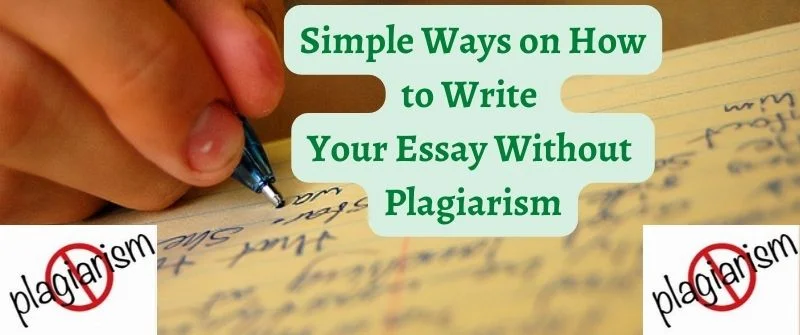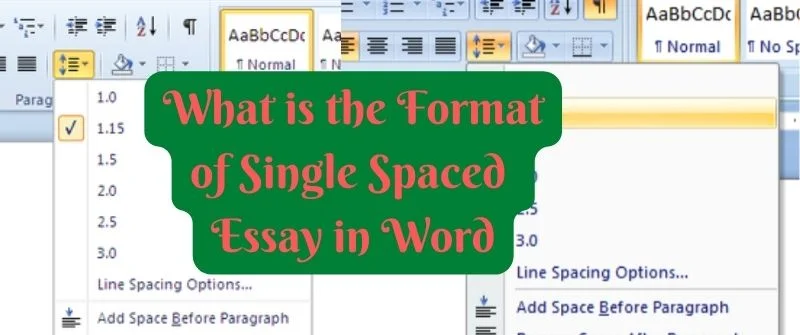Acceptable Turnitin percentage: Interpret Originality Report
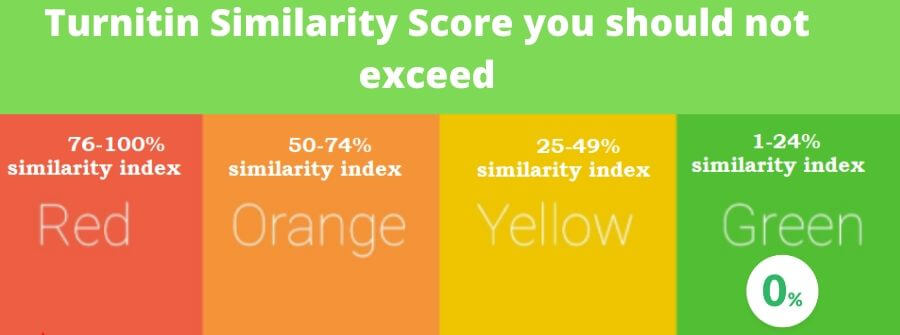
Before we unravel the acceptable Turnitin Percentage and learn how to interpret Turnitin’s originality report, it is important first to understand what it is and how it works to produce the similarity score. First of all, Turnitin is an online program that checks papers and essays for originality and detects plagiarism.
Our essay-writing experts advise that Turnitin is the best plagiarism scanner out there. And for sure, it will help prevent plagiarism. This is because it will pinpoint any citation mistakes and copy and paste incidents into your paper. But how?
Basically, Turnitin works by detecting any text overlaps between your submitted papers and its huge database, ranging from previously submitted works by students, websites, articles, books, and all other archives that are at its disposal.
The Acceptable Turnitin Percentage for the Similarity Score
The acceptable Turnitin percentage is anything below 25% in the similarity report. A Turnitin plagiarism score of 25% and below shows that your paper is original. It also shows that your work is underpinned by enough sources, especially when well-cited and referenced.
Any Turnitin percentage beyond 25% is just too much, especially if not referenced.
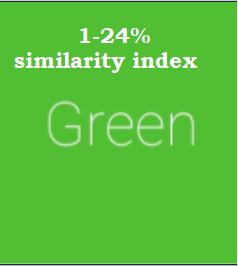
To understand this, it is important to note that Turnitin similarity reports, also called originality reports, indicate the similarity between work submitted for checking and the content in the Turnitin database.
Turnitin database includes all previously checked work, all pages available on the internet, and other sources.
You are provided with a similarity report only if there is matching content between your work and the content on the database.
It only takes Turnitin about five minutes after submission to generate the similarity reports. Any re-submitted work may take up to a day.
It should be noted that similarity reports should not be used to determine the level of plagiarism. The reports should help in the identification of potential plagiarism sources. The best method to prove plagiarism is by comparing the submitted work with the content of the suspected sources.
Acceptable Turnitin Similarity Report and Color
As will be explained in the next section, the similarity report icons come in different colors. Each color indicates the similarity score based on the matching content detected. The score usually ranges from 0% to 100%.
Blue represents zero instances of matching work, green represents 1% to 24% of matching text found, yellow represents 25% to 49% of matching work, orange represents 50% to 74% of similarity, and red represents 75% to 100% of matching texts found.
Similarity percentages are recorded on the top right of the document provided. There is no clear set of guidelines or rules that determine the acceptability of any Turnitin percentage.
Academicians argue that any type of work must include some words that are similar to different sources. We covered this in an article about what is detected by Turnitin and what it does not. Check it out. Therefore, a similarity report with less than 15% matching text can represent plagiarism-free work.
However, if the matching texts that amount to 15% are continuous, the work can be considered plagiarized despite the acceptable overall Turnitin percentage. Most instructors require work minimal plagiarized work possible. This means that 15% and below percentage is not applicable everywhere.
How to Read and Interpret Turnitin Scores
Though the percentage in Turnitin’s originality score does not necessarily indicate plagiarism, ideally, each percentage translates to a certain degree of matches between the text in your paper and other material from Turnitin’s database. The percentage ranges from 0% to 100%, with 100% indicating the most matches and 0% indicating the least matches.
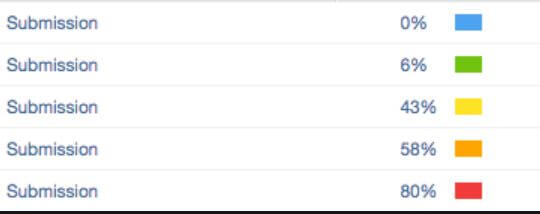
Below 5% means that your paper is very okay when it comes to matches.
Below 24% means that your paper is still acceptable. Scores between 25% and 49% mean your paper needs to be revised and resubmitted.
Scores between 50% and 74% mean that your paper requires a lot of revision because it indicates that there is possible plagiarism.
A score of more than 75% indicates that your paper is unacceptable and should be rewritten (not revised). This is because it shows that you have plagiarized your paper.
On top of the percentage scores presented in the originality report, you will notice that they are accompanied by different colors. Each color carries its meaning; the next section will help you understand it.
How do Turnitin Percentage and Scores Work?
You may wonder how you will read and interpret the similarity reports now that you have understood what Turnitin detects. This is because the papers that have been submitted through Turnitin will be returned through an Originality Report.
You must be well versed with the readings to understand the percentage (%) scores and the colors used to mean. Therefore, let’s delve into the details.
As noted, Turnitin will match your submitted papers with millions of other texts from their database. After submitting your paper, you will receive an Originality Report containing a percentage that represents the volume of text within your paper that matches other texts from Turnitin’s database.
You should note here that there is a significant difference between plagiarism and what Turnitin detects as text matches or the similarity index. Therefore, do not be alarmed when Turnitin highlights matching text in your papers.
This is because it flags any material it regards as matching, and this does not mean that it is plagiarized. You may have properly cited or quoted text, but still, the material matches other text from its database. Anyway, let’s continue.
So far, we have noted that the percentage match does not definitively show that your work is plagiarized. You may submit your paper and receive an originality score of, let’s say, 40%. This score can be acceptable as long as you have cited your work appropriately.
On the other hand, you may receive an originality report with a percentage of less than 5% after you have submitted your paper. This may paradoxically mean that your work is supported by inappropriate and insufficient references and sources.
Turnitin Colors and what they mean
Five basic colors are used by Turnitin to represent the extent to which your paper contains matches Turnitin’s database. According to the universities using the scanner, the Turnitin colors are orange, red, yellow, green, and blue.

The red color indicates a score of between 75% and 100%, while the orange color indicates a score between 50% and 74%. When your paper contains those colors, you should consider thoroughly revising or rewriting it. They are not good indicators.
On the other hand, yellow indicates a score of between 25% and 49%, while green indicates a score of between 0% and 24%. As aforementioned, yellow should prompt you to revise your paper appropriately to reduce the similarity index.
Green is the acceptable Turnitin color in most cases. However, some instructors may require you to reduce the similarity index to below 5% to accept your paper.
Finally, blue indicates that your paper has less than 20 matching words from Turnitin’s database. This is a perfect score.
From those Turnitin colors and highlights, students should try as much as possible to maintain scores below 25% and, if possible, below 5%. Your instructor may consider giving you bonus points for reducing the similarity index and evading plagiarism.
Now that we have understood what Turnitin does and what originality reports mean, how can you plagiarize without getting caught by Turnitin? Let’s tackle that in the next section.
What Turnitin Similarity Percentage is too much?
An essay with a similarity report of over 25 per cent can be said to be highly plagiarized. Represented by yellow, orange, and red colors, these percentages indicate too much similarity in work.
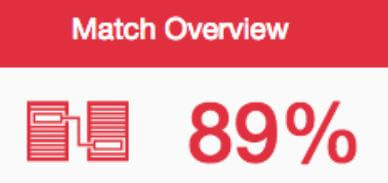
The requirements of the essay and the student’s work determine whether a paper is plagiarized.
The percentage of matches found in a piece of work depends on the assignment’s settings that are set by instructors.
For accurate overall percentages, the default setting excludes quoted words, references, and small matches of up to five words.
To determine plagiarism, one must go beyond the similarity percentage provided and look into the original report in detail. Read our guide on how to cheat Turnitin to learn how you can reduce such bad plagiarism scores.
Conclusion
All said and done; the bottom line comes to the instructor. He is the one who will determine if your paper is plagiarized or not, whether your Turnitin percentage is at the acceptable similarity score or not.
However, it is advisable to always keep your Turnitin similarity score at 25% and below. This is because lower scores show that your paper is original and you have not copied much from other sources.
It also advisable that you always cite your sources and reference them well using the referencing style your professor requires. This is all about referencing and quotes, using APA, MLA and Havard styles.
What percentage is bad on Turnitin
Any percentage above 20% indicates that there are cases of similarity in the submitted work. Various institutions have varying acceptable similarity percentages. Types of academic output also determine acceptable similarity percentages.
Therefore, A 20% similarity score on a Master’s paper is acceptable because most information is derived from existing authorities. Publications, on the other hand, should not have more than the acceptable score or level.
Turnitin similarity of 30, is it bad? Is 20%similarity bad?
A report with a similarity percentage of more than 20% or 30% is considered bad. Though the percentage varies from institution to institution, the content of any work that is copied from web pages is considered plagiarism.
This is why it is important to compare the sources of information indicated on the similarity report with what is in the submitted paper. Such comparison is good and is part of your knowledge on how to use Turnitin well, and you should take time to understand it.
What is a good similarity score?
There is no good similarity score if plagiarism can be identified. Normally a percentage ranging from 0 to 5 is considered acceptable by many institutions. It is important to note that a low percentage may indicate insufficient sources on the Turnitin database to check your work. Plagiarism may be present but it cannot be detected.
When is a Turnitin percentage of 40 good or bad?
When your work is referenced and presented properly, a 40% similarity score is acceptable. Turnitin does not detect well-cited work as not plagiarised. This, however, depends on the instructors.
Instructors should determine whether the cited contented flagged as plagiarised is correctly cited. This means that if the writer did not cite well, then he or she will not escape plagiarism.
Get an Original Essay Today
Are you burdened by homework, and you need a little help? Let our experts help you with it. We will deliver a quality essay and
To learn more, watch the video here



